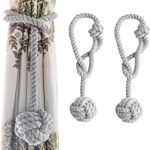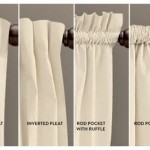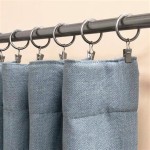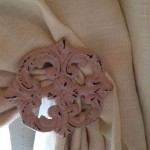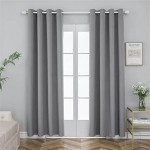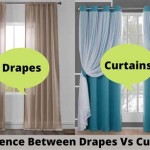Privacy Curtains: Enhancing Dignity and Comfort in Nursing Homes
Nursing homes serve a vital role in providing care and support for individuals who require assistance with daily living activities. One crucial aspect of creating a comfortable and dignified environment within these facilities is ensuring resident privacy. Privacy curtains are a fundamental component of this, offering a simple yet effective solution for establishing personal space and promoting a sense of well-being for residents.
While the primary function of privacy curtains is to create visual separation, their impact extends far beyond mere aesthetics. They contribute significantly to residents' emotional health, psychological comfort, and overall quality of life. This article delves into the importance of privacy curtains in nursing homes, exploring their benefits, different types, key considerations for selection, and best practices for maintenance.
The Multifaceted Benefits of Privacy Curtains
Privacy curtains in nursing homes offer a wide array of benefits addressing various aspects of resident well-being. These include psychological, physical, and social advantages that greatly improve the overall living experience.
Firstly, privacy curtains are crucial for maintaining a sense of dignity and autonomy. In a setting where residents often relinquish control over many aspects of their lives, the ability to create a private space becomes paramount. The curtain serves as a symbolic boundary, signifying personal territory and allowing residents to engage in personal activities without feeling exposed or vulnerable. This is especially important during activities such as dressing, bathing, or receiving medical care. Without the option of privacy, residents may experience feelings of shame, embarrassment, and a loss of self-respect.
Secondly, privacy curtains contribute significantly to psychological well-being by reducing stress and anxiety. The constant exposure to other residents, staff, and visitors can be overwhelming, leading to feelings of unease and restlessness. The ability to retreat behind a curtain offers a respite from this, allowing individuals to relax and de-stress in a more controlled environment. This is particularly beneficial for residents with cognitive impairments or those prone to agitation. The visual barrier created by the curtain can also help to minimize distractions and promote a sense of calm, contributing to improved sleep quality and overall mental health.
Thirdly, privacy curtains promote a sense of safety and security. Nursing homes, by their nature, can feel institutional and impersonal. A privacy curtain can transform a shared room into a more personalized and comforting space. This sense of security is especially important for residents who may be experiencing feelings of vulnerability or fear due to age-related changes, cognitive decline, or health conditions. The curtain provides a physical barrier against unwanted intrusions, offering a sense of protection and control over their immediate surroundings. This can lead to increased feelings of comfort and reduced anxiety, fostering a more positive outlook and improved overall well-being.
Beyond these core benefits, privacy curtains can also play a role in controlling the spread of infection. While not a substitute for proper hygiene practices, curtains made from appropriate materials can help to contain airborne particles and reduce the risk of cross-contamination between residents. Antimicrobial fabrics are increasingly common, offering an additional layer of protection against harmful bacteria and viruses. This is particularly important in nursing homes, where residents are often more susceptible to infections due to weakened immune systems or underlying health conditions.
Finally, privacy curtains can also contribute to improved aesthetics within the nursing home environment. By selecting curtains in colors and patterns that are visually appealing and complementary to the overall décor, the space can be made more inviting and homelike. This can have a positive impact on both residents and staff, creating a more pleasant and welcoming atmosphere that promotes a sense of well-being for everyone.
Types of Privacy Curtains Available
The market offers a variety of privacy curtains designed to meet the specific needs of nursing homes. Understanding the different types available is crucial for selecting the most appropriate option for a particular setting.
One of the most common types is the standard cubicle curtain, typically made from fabric and suspended from a track system mounted on the ceiling. These curtains are available in a wide range of colors, patterns, and materials, allowing for customization to match the overall décor. Standard cubicle curtains are generally easy to install and maintain, making them a cost-effective option for many nursing homes. They are also relatively durable and can withstand frequent use.
Another option is disposable privacy curtains. These curtains are designed for single-use or short-term use, making them ideal for situations where infection control is a top priority. They are typically made from lightweight, non-woven materials and are designed to be easily replaced after each resident or when visibly soiled. Disposable curtains can help to reduce the risk of cross-contamination and are particularly useful in isolation areas or during outbreaks of infectious diseases. While they may be more expensive on a per-curtain basis, the reduced need for laundering and maintenance can offset some of the costs.
Flame-retardant curtains are another important consideration, particularly in healthcare settings. These curtains are treated with a special coating that makes them resistant to catching fire, providing an added layer of safety in the event of an emergency. Flame-retardant curtains are often required by building codes and regulations in nursing homes, ensuring that residents are protected from fire hazards. It is crucial to ensure that any curtains purchased for a nursing home meet the required fire safety standards.
Antimicrobial curtains are increasingly popular due to their ability to inhibit the growth of bacteria and other microorganisms. These curtains are made from fabrics that are treated with antimicrobial agents, providing an added layer of protection against infection. Antimicrobial curtains can help to reduce the spread of germs and are particularly beneficial in areas where residents are more vulnerable to infection. While they may be more expensive than standard curtains, the added protection they provide can be well worth the investment.
Trackless curtains, also known as portable privacy screens, offer a flexible and adaptable solution for creating temporary privacy. These screens typically consist of a fabric panel supported by a lightweight frame, and they can be easily moved and positioned as needed. Trackless curtains are ideal for situations where permanent privacy solutions are not feasible or desirable, such as during temporary room reconfigurations or for providing privacy during mobile medical procedures. They are also useful for creating privacy in common areas or for dividing large spaces into smaller, more intimate zones.
Finally, motorized privacy curtains offer a convenient and user-friendly option for residents or staff. These curtains can be opened and closed with the touch of a button, making them ideal for residents with mobility limitations or for situations where quick and easy access is required. Motorized curtains can also be programmed to open and close automatically at certain times of the day, providing an added level of convenience and control.
Key Considerations When Selecting Privacy Curtains
Choosing the right privacy curtains for a nursing home involves considering a variety of factors to ensure that they meet the specific needs of the residents and the facility. These factors include material, size, fire safety, infection control, ease of maintenance, and aesthetics.
The material of the curtain is a primary consideration. Fabrics should be durable, easy to clean, and resistant to fading or tearing. Popular choices include polyester, cotton blends, and vinyl. For infection control, antimicrobial fabrics are recommended. The material should also be breathable to promote air circulation and prevent the build-up of moisture.
Size is another important consideration. Curtains should be long enough to provide adequate privacy but not so long that they drag on the floor, creating a tripping hazard or becoming easily soiled. The width of the curtain should also be sufficient to fully enclose the space when closed. Accurate measurements are crucial to ensure a proper fit.
Fire safety is paramount. All curtains must meet or exceed the fire safety standards mandated by local and national regulations. Flame-retardant materials are essential, and documentation should be readily available to verify compliance. Regular inspections and testing should be conducted to ensure that the curtains remain fire-safe over time.
As mentioned earlier, infection control is a critical concern. Antimicrobial fabrics can help to reduce the spread of germs, but proper cleaning and maintenance are also essential. Curtains should be laundered or disinfected regularly according to the manufacturer's instructions. A clear protocol for handling and cleaning soiled curtains should be in place to prevent cross-contamination.
Ease of maintenance is another important factor to consider. Curtains should be easy to install, remove, and clean. Machine-washable fabrics are generally preferred. The track system should also be easy to maintain and operate smoothly. Regular maintenance can help to extend the lifespan of the curtains and ensure that they continue to function properly.
Finally, aesthetics should not be overlooked. While functionality is paramount, the appearance of the curtains can also contribute to the overall atmosphere of the nursing home. Select colors and patterns that are visually appealing and create a calming and welcoming environment. Consider incorporating the curtains into the overall décor scheme to create a cohesive and harmonious look. Involving residents in the selection process can also help to ensure that the curtains meet their personal preferences and contribute to their sense of comfort and well-being.
By carefully considering these factors, nursing homes can select privacy curtains that provide optimal privacy, safety, and comfort for their residents, while also enhancing the overall environment of the facility.

How Often Should Hospital Privacy Curtains Be Cleaned

Hospital Curtains Custom Cubicle Privacy

Cubicle Curtains And Hospital Privacy Us Markerboard

Privacy Room Divider Blackout Curtain Thermal Curtains For Spa Clinic Medical

Medical Curtain Privacy Room Divider Drapes For Spa Hospital Clinic

Measuring Guidelines For Privacy Cubicle Curtains Curtain Tracks Com

Hospital Curtains And Tracks Prestige Decor

Nursing Home Ward Curtain U Shaped L Partition China Made In Com

Cubicle Curtains And Tracks Acme Drapemaster

Hospital Privacy Cubicle Curtains Antimicrobial Sterile Curtain Tracks Com

